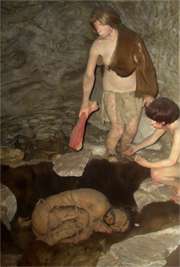Back to Don's Maps
 Mousterian (Neanderthal) Sites
Mousterian (Neanderthal) Sites Back to the review of hominins
Back to the review of hominins
Neandertal models
The Neanderthal Museum in Mettman, Germany
The museum exists to display the Neanderthal cultural heritage for the general public as well as for specialist research.

This is a delightful photograph from the Neanderthal Museum in Mettmann, Germany.
Photo: © Neanderthal Museum/H. Neumann
Source: http://www.neanderthal.de/en/press-pictures/pictures/neanderthals/index.html
Permission: by kind permission of Dr. Bärbel Auffermann, Deputy Director of the Museum, and in charge of Exhibition Management, Press and Public Relations.
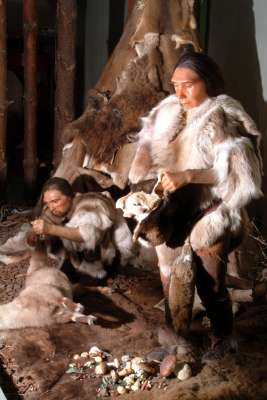
Neanderthals were able to survive the cold of the ice ages by their ability to use furs and fire.
Photo: © Neanderthal Museum/I. Vogel
Source: http://www.neanderthal.de/en/press-pictures/pictures/neanderthals/index.html
Permission: by kind permission of Dr. Bärbel Auffermann, Deputy Director of the Museum, and in charge of Exhibition Management, Press and Public Relations.
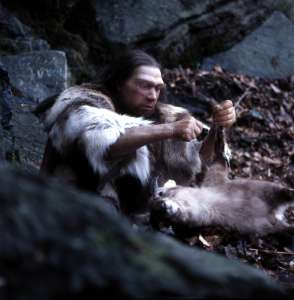
Neanderthals had a serviceable tool kit of stone tools, and had standard methods of creating all manner of very sharp axes, knives and scrapers from flint, chalcedony and obsidian.
Photo: © Neanderthal Museum/I. Vogel
Source: http://www.neanderthal.de/en/press-pictures/pictures/neanderthals/index.html
Permission: by kind permission of Dr. Bärbel Auffermann, Deputy Director of the Museum, and in charge of Exhibition Management, Press and Public Relations.
Musée National de Préhistoire, Les Eyzies
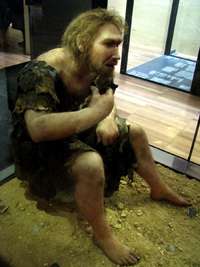
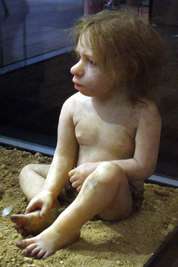

Neandertal models, beautifully crafted. The child is listening to the man attentively.
The sculptor was not credited, but it is the work of Elizabeth Daynès. The child is based on the three year old found at Roc de Marsal, in the Dordogne. The adult is based on La Ferrassie I.
It is a superb work, a real tour de force by a master sculptor.
Photo: Don Hitchcock 2008
Source: Display at Musée National de Préhistoire, Les Eyzies
National Science Museum, Tokyo

Archaic humans evolved from Homo erectus about 600 000 years ago and lived in Africa and Eurasia from 150 000 to 30 000 years ago. Of these, the Neanderthals (Homo neanderthalensis) lived in Europe from 150 000 to 30 000 years ago.
Cranial capacity during this stage was little different from modern humans at 1200 - 1600 ml and during the later stages Mousterian and other complex stone tools were produced. The reconstruction is of an adult male Homo neanderthalensis (La Ferrassie 1) discovered from the La Ferrassie rock shelter in the Dordogne region of France in 1910. The physique is very robust and the cranial capacity is larger than the average of contemporary humans.
Photo and text from the National Science Museum in Tokyo website.

Neandertal model from the National Science Museum in Tokyo
Photo: Jerrers

Neandertal model from the National Science Museum in Tokyo
Photo: Jerrers
The Smithsonian, Washington DC

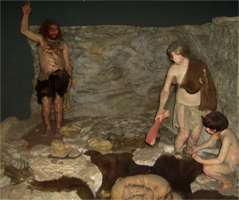
A diorama of a Neandertal burial from the Smithsonian, Washington DC. This was produced sometime during the 1970s.
Photo: Jerrers
